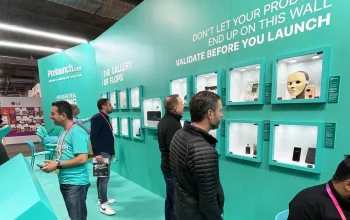Medical technology offers healthcare professionals the tools necessary to diagnose and treat patients quickly and effectively, saving both time and energy by decreasing the number of tests required.
Medical laboratory scientists who specialize in Hematology investigate blood cells. For instance, they can assess whether or not the hemostasis system is functioning effectively by conducting Protime and Activated Prothrombin Time tests.
Electronic health records (EHRs)
EHRs enable healthcare organizations to effectively manage clinical information and facilitate data sharing, ultimately improving patient safety, care coordination, clinical research and reducing paper chart maintenance costs. Long term care facilities may find these technologies especially helpful by eliminating paper chart maintenance.
There are, however, various concerns with using EHRs. Physicians worry about data security while disliking that EHRs limit autonomy and prevent them from making independent decisions. They are also worried that using an EHR will increase liability exposure.
EHRs have also been found to reduce medical errors, improve communication between doctors, enable clinicians to document more accurately, and provide access to more medical records. Unfortunately, their implementation costs can be significant and require months for completion; furthermore they require long-term digital storage with associated maintenance expenses.
Telemedicine
Telemedicine is a form of remote healthcare delivered via videoconferencing and other medical technologies, used for everything from consultations with specialists to virtual visits and symptom surveys. Telemedicine may also assist chronic condition patients manage their condition more effectively by offering them access to support groups and educational resources.
Telemedicine allows physicians to transmit images and information directly to patients via a secure electronic communication system, enabling physicians in rural areas to send x-rays or MRIs directly to specialists at other hospitals for evaluation or diagnosis, while it also can be used for high risk monitoring in order to provide early detection alerts and notifications.
Telemedicine has grown increasingly popular as it offers both patients and practitioners convenience. By eliminating the need for physical visits, hospital admissions can be reduced significantly – proving especially useful in rural areas or palliative care settings where patients may be reluctant to visit a physician directly. Telemedicine also relieves primary care providers of extra workload while helping avoid expensive readmissions for readmitted patients.
Medical virtual reality
Medical virtual reality uses computer-generated technology to assist both patients and healthcare providers. It can be used for surgery, practicing telemedicine sessions and managing chronic pain relief, teaching communication skills to children with autism or training medical students through lifelike simulations.
One of the most exciting uses for virtual reality (VR) in medicine is telesurgery. This application of VR enables surgeons to conduct surgeries remotely using robotic devices – an efficient alternative to traditional methods that can also serve to train aspiring surgeons and increase patient satisfaction.
VR can also help patients overcome substance abuse. Substance use often begins as an attempt to cope with stress and anxiety, but can become dangerous without treatment. Medical VR offers users a safe space where they can get away from triggers in a controlled setting while receiving support and coaching to develop healthier coping mechanisms.
Robotic pills
Robotic pills are easily controlled remotely to deliver medication directly into specific regions of the gastrointestinal tract, or used for imaging and monitoring bowel disease. Their technology relies on an embedded magnetic core which allows directed locomotion and docking control. An onboard camera and “anchor” can then be lowered down onto tumours or ulcers so a minisyringe can inject medicine directly into them.
MIT researchers have designed a robotic pill capable of traversing through the mucus barrier of the digestive tract to deposit drugs directly in cells lining the small intestine. Gyrations from its spinner-torpedo shape help scrub away intestinal tissue while being less likely to provoke irritation than injection. Furthermore, its acid resistant coating and digestive enzymes ensure it remains within stomach movements over extended periods; in fact it has even docked for extended periods in a porcine intestine model under constant flow conditions.









